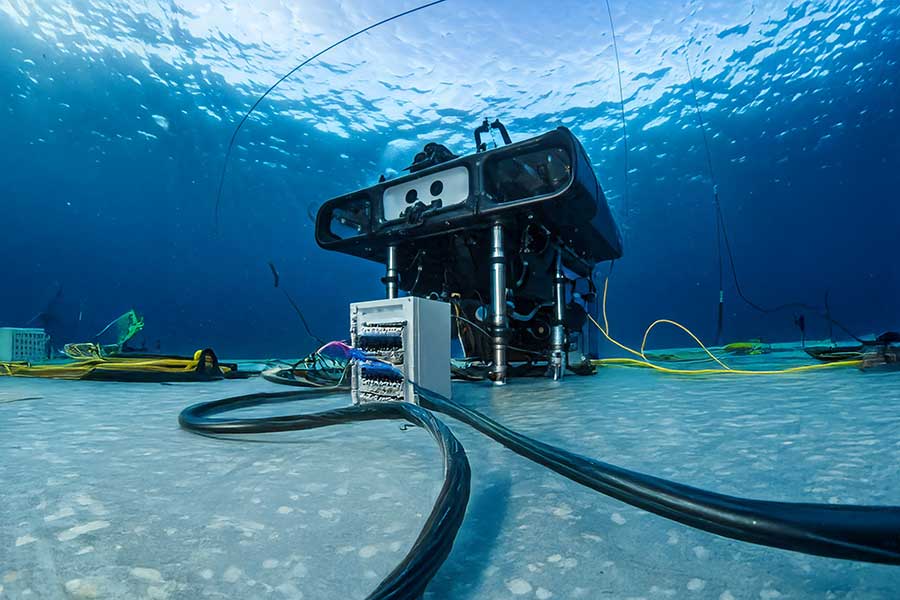
The transmission of electrical energy and signals must be carried out reliably in any environment. However, wet environments, and especially underwater environments, pose significant challenges for cables and cabling systems. Since water is a conductive substance, it increases the risk of electric shock and can disrupt the insulation of cables. Therefore, specially designed cables and appropriate wiring techniques should be used in such environments. You can get support from Ülkü Kablo for cabling solutions in wet environments. In this article, we will examine in detail the characteristics, types, application areas and cabling techniques that need to be considered in wet environments and underwater cables.
Wet Environment Cables
Wet environments are those in which water or moisture is present continuously or intermittently. For example, bathrooms, kitchens, outdoor lighting, poolsides, industrial facilities, and agricultural areas are examples of wet environments. Cables used in these environments must have the following characteristics:
- Water and Moisture Resistance: The insulation and sheath materials of the cables must be waterproof and moisture-proof.
- Corrosion Resistance: Conductors and other metal parts of cables must be resistant to corrosion.
- Mechanical Strength: Cables need to be resistant to impacts, abrasion and other mechanical stresses.
- UV Resistance (For Outdoor Applications): Cables used outdoors must be resistant to the sun's UV rays.
Types of Wet Environment Cables:
- HO7RN-F Cables: Rubber-insulated and sheathed, these cables are flexible and durable. They are suitable for use in harsh environments and outdoors.
- NYY Cables: These PVC-insulated and sheathed cables are suitable for general purpose use and can also be laid underground. However, it is not recommended for use in environments that will be constantly exposed to water.
- NYMHY Cables: PVC insulated and sheathed, these cables are suitable for indoor installations and especially for indoor distribution lines. It should be used with caution in wet environments.
Underwater Cables
Underwater cables are special cables that are used under seas, lakes, rivers, and other bodies of water. These cables have to withstand much harsher conditions:
- High Pressure Resistance: As the water depth increases, the pressure also increases. Underwater cables must be able to withstand this high pressure.
- Waterproofing: Cables must be completely waterproof.
- Corrosion Resistance: Salt water is very corrosive to metal parts of cables. Underwater cables must be manufactured from materials with high resistance to corrosion.
- Mechanical Strength: Water currents, sea creatures and other factors can cause mechanical damage to cables. Underwater cables must be resistant to such stresses.
- Chemical Resistance: Chemicals present underwater can damage cables. Underwater cables must be resistant to these chemicals.
Types of Underwater Cables:
- Submarine Telecommunication Cables: These are cables that provide data transmission between oceans using fiber optic technology.
- Submarine Energy Cables: These are cables used to transmit electrical energy from submarine wind farms to land.
- Underwater Observation and Control Cables: These are cables used for underwater robots, sensors and other equipment.
- Underwater Lighting Cables: These are the cables used for underwater lighting systems.
Structure of Underwater Cables:
Underwater cables usually consist of the following layers:
- Conductor: Conductors made of copper or aluminum.
- Insulation: Waterproof insulation materials such as polyethylene (PE), cross-linked polyethylene (XLPE) or rubber.
- Protective Layers: Steel wires, lead sheath or other layers of mechanical protection.
- Outer Sheath: Outer sheath made of polyethylene, polyurethane, or other durable materials.
Wet Environment and Underwater Cabling Applications:
- Correct Cable Selection: It is very important to choose a cable suitable for the application area and environmental conditions.
- Waterproof Connections: Cable connections must be made using waterproof gaskets and connectors.
- Cable Laying Techniques: Cables must be properly laid and secured. Special laying techniques and equipment are used for underwater cables.
- Grounding: Proper grounding should be done to reduce the risk of electric shock.
- Periodic Checks: Cables and connections need to be checked and maintained regularly.
Safety Precautions:
- A qualified electrician should be consulted when performing electrical work in wet environments and underwater.
- Appropriate safety equipment should be used to avoid the risk of electric shock.
- Cables and connections should be checked regularly for damage.
Result:
Proper cable selection and proper wiring techniques for wet and underwater environments are critical for a safe and reliable transmission of electricity. Choosing the right cable and applying proper wiring techniques, taking into account the requirements of the application and environmental conditions, is essential to prevent possible accidents and ensure the longevity of the system. As Ülkü Kablo, we are pleased with our cabling solutions in areas such as wet environments or underwater.
